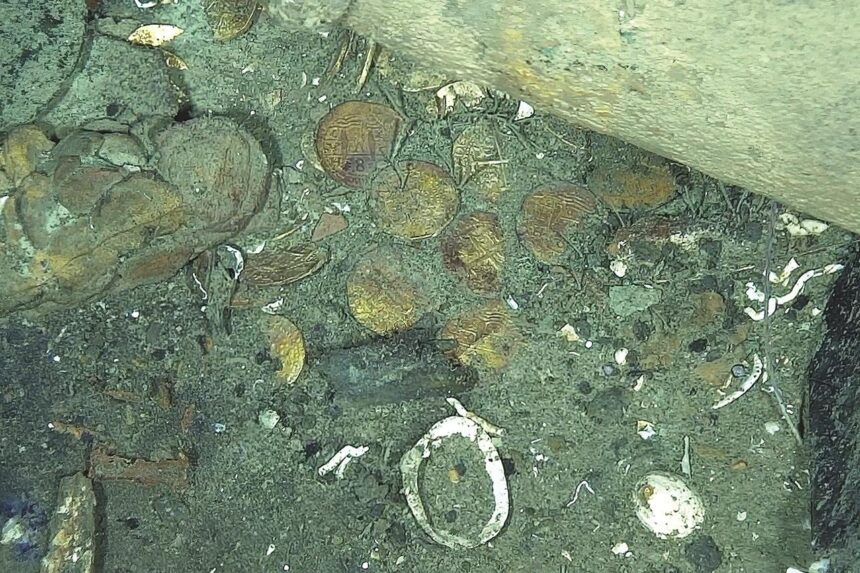New Insights on Gold Coins from Historic Shipwreck
More than 300 years after the storied Spanish galleon, San Jose, sank off Colombia’s coast, researchers have uncovered fascinating details about gold coins discovered around the shipwreck. Known as the “holy grail” among shipwrecks, the galleon was reportedly laden with wealth, including gold, silver, and gemstones, when it was sunk by the British navy in 1708, leading to the tragic loss of most of its approximately 600 crew members.
Confirmation of Origin
Recent analyses of the intricately designed gold coins indicate that they indeed originated from the San Jose. Published in the journal Antiquity, the study details how researchers, collaborating with Colombia’s navy, utilized images from remotely operated vehicles (ROVs) to examine dozens of coins scattered nearly 2,000 feet beneath the ocean. Although the precise number of coins remains uncertain due to the site’s changing conditions, the images reveal that the coins average a diameter of 32.5 millimeters and weigh around 27 grams.
Distinctive features on some coins include the letters “PVA,” which stand for the Latin phrase “Plus Ultra”—translating to “Further Beyond.” This motto was used on currency to signify the Spanish monarchy’s expansion across the Atlantic. Additionally, researchers identified details indicating the denominations of the coins as well as their minting date of 1707.
Historical Context of the Coins
The coins analyzed are part of a class known as cobs or macuquinas, which served as the principal currency in the Americas for over two centuries. These coins were typically cut from gold or silver ingots and were characterized by their hand-struck, uneven shapes.
Explorations and Excavations
In August 2024, Colombian authorities revealed that an ROV had surveyed the wreck site, unveiling a variety of artifacts, such as anchors, jugs, and glass bottles. Plans for further explorations and extractions from the site, situated off Colombia’s Caribbean coast, had been announced earlier, utilizing multiple ROVs for the operation.
Since the San Jose was located in 2015, its precise location has been kept confidential to deter treasure hunters. Various factions have laid claim to the shipwreck, including Colombia, Spain, and Indigenous Qhara Qhara Bolivians, all insisting that the treasures aboard were taken from them. A U.S.-based salvage company, Sea Search Armada, also claims ownership, alleging that they discovered the wreck over 40 years ago.
The Sinking Event
The circumstances surrounding the sinking of the San Jose remain contentious; British documentation suggests that the ship did not explode, while Spanish accounts claim it was destroyed during the battle. Regardless, the galleon sank on June 7, 1708, while transporting vast wealth from the New World back to Spain, sealing the fate of the majority of its crew.
Protection Status
In May 2024, the Colombian government declared the shipwreck site a “protected archaeological area,” ensuring that further conservation efforts could be implemented to safeguard this priceless historical treasure.
| Feature | Details |
|---|---|
| Ship Name | San Jose |
| Sinking Year | 1708 |
| Estimated Treasure Value | Billions of dollars |
| Coins Average Diameter | 32.5 mm |
| Coins Average Weight | 27 grams |




